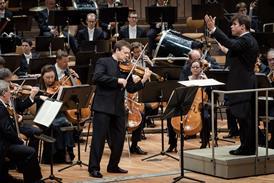Mark Pemberton, former chief executive of the Association of British Orchestras, gives a critical appraisal of Heather Kurzbauer’s volume on the running of an orchestra

Employment and Vulnerabilities in the World of Orchestral Musicians: Symphonic Metamorphoses
Heather Kurzbauer
424PP ISBN 9789403527376
Wolters Kluwer €125
Shortly after the global financial crisis of 2008–09, the musicians of a British freelance chamber orchestra decided to make their management staff redundant and run the orchestra themselves. And then they hit a dilemma. As musicians, they wanted their concert fees to go up. But as managers, they realised this would make a bad financial situation even worse. And within a few years, they reinstated a management team.
This story illustrates the problem at the heart of this detailed, well-researched but ultimately tendentious book by Heather Kurzbauer, who combines both expertise in employment law with a career as a professional musician. Neatly utilising a musical structure of movements, intermezzos and closing chords, the book combines lengthy disquisitions on case law, gender, race and age discrimination with a passionate attack on ‘neoliberal’ cuts to orchestra funding and the impact on musicians, especially freelancers.
This, however, leads her down a rabbit hole. For example, she attempts to blame Baumol and Bowen’s economic theory of ‘cost disease’ for recent funding cuts, without understanding that it is this very theory that justifies government funding in the first place. It is only by explaining the permanent market failure inherent in the orchestral business model that governments have been persuaded to provide public funding, and it was certainly the argument I used when I successfully negotiated Orchestra Tax Relief with the UK Treasury, which has helped offset the 40 per cent devaluation in Arts Council England funding since 2010.
Read: 10 tips for a successful orchestral audition
Watch: Should orchestral musicians be fearful of their conductor?
She also attacks Robert Flanagan for his 2012 analysis The Perilous Life of Symphony Orchestras, stating: ‘no mention is made of the exorbitant fees paid to guest conductors and soloists.’ This is not true. In fact he includes data showing conductors and soloist fees equate to around 15 per cent of artistic costs, with the remaining 85 per cent spent on the orchestral musicians. And in turn, artistic costs account for 50 per cent of total expenditure. She goes on to make generalisations about there being too many people on the administrative payroll – so who does she think sell the tickets, raise the funds, run the learning and participation programmes, negotiate with venues, and look after the musicians on tour?
These were all arguments I heard in the 15 years I headed negotiations on the collective agreement for the UK’s freelance orchestral musicians, when even in the worst of times the musicians got a pay rise, while administrative staff had their salaries frozen.
At one point she says, ‘Writing what is partially a personal narrative in the context of a book is complicated as it calls for removing subjectivity to answer the demands of academic objectivity.’ Sadly, she has not succeeded. The book lacks balance, prioritises anecdote over data and, while some managers are listed as having been interviewed, their voices are not included to put the other side of the story.
Let’s be clear. No orchestra manager wants to cut musicians’ pay. But running an orchestra is an expensive and risky business, and if sufficient funding isn’t there, options are limited. We wish there was another way. But sadly Ms Kurzbauer doesn’t provide a signpost to what that might be.
MARK PEMBERTON



































No comments yet